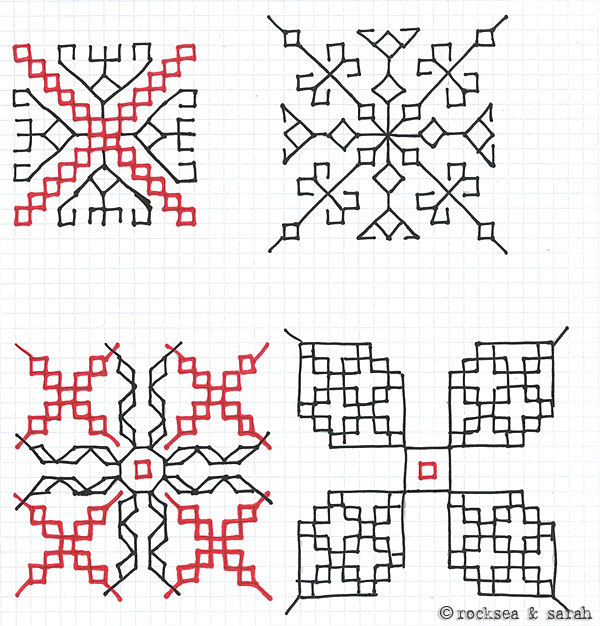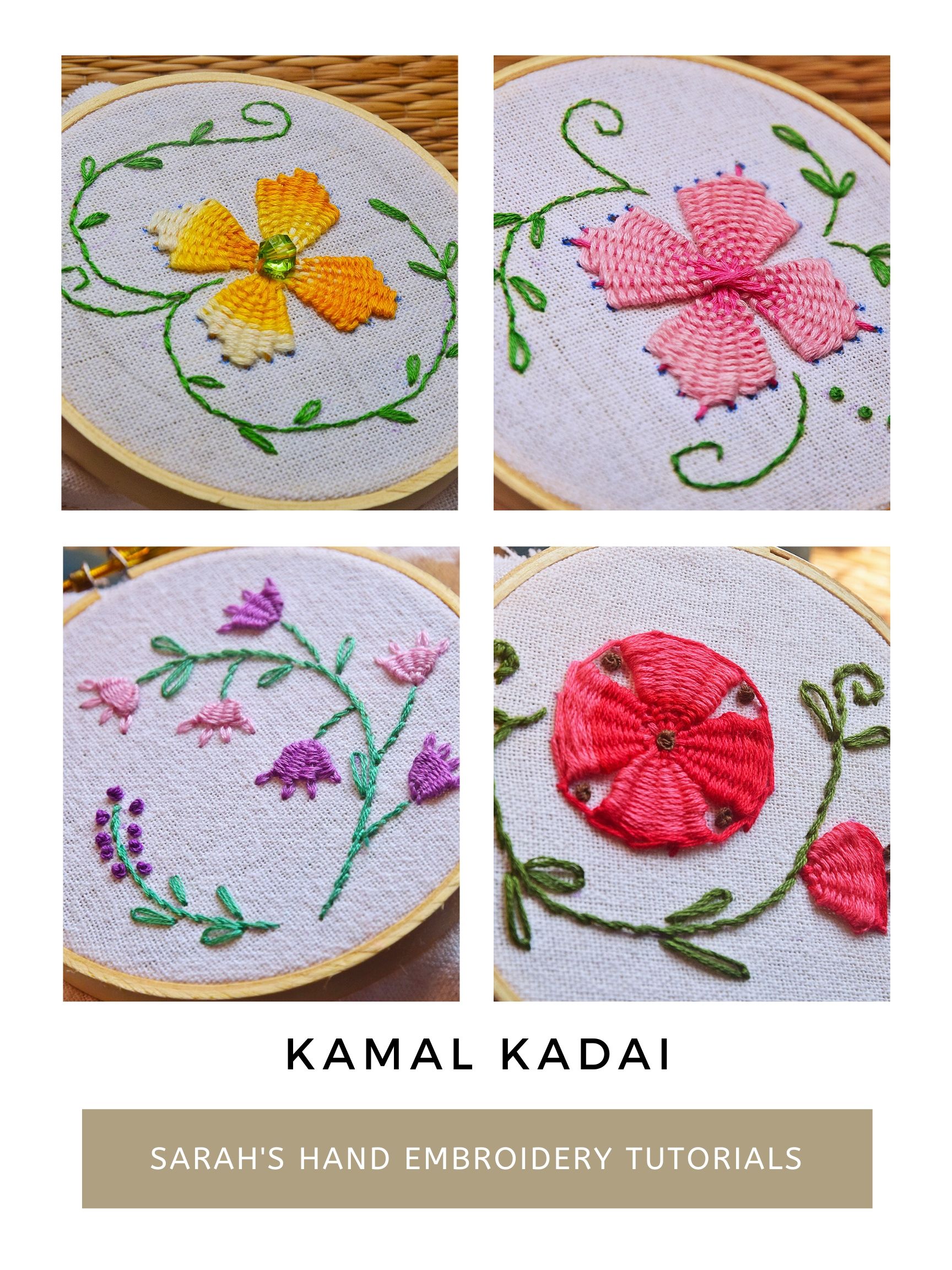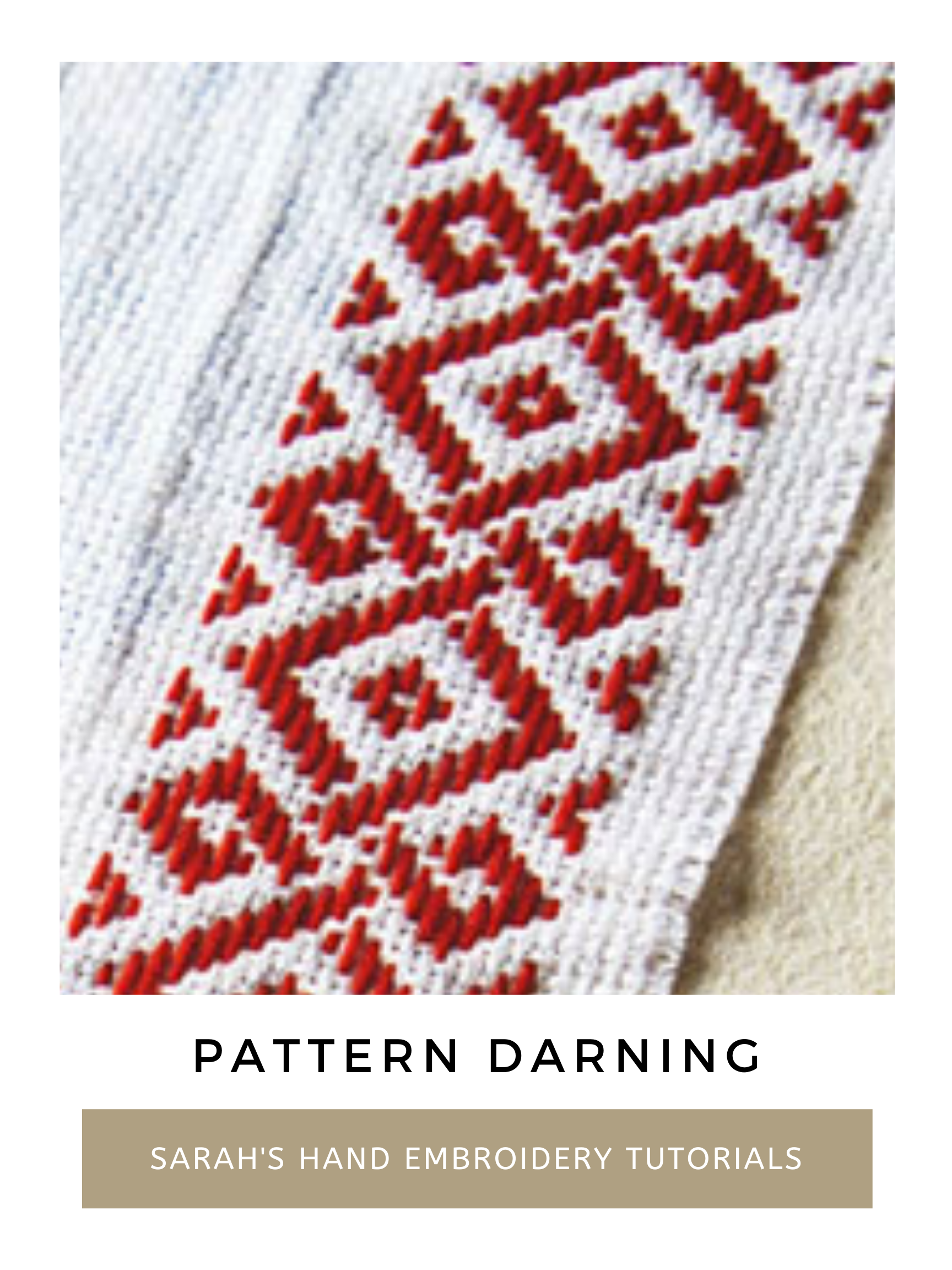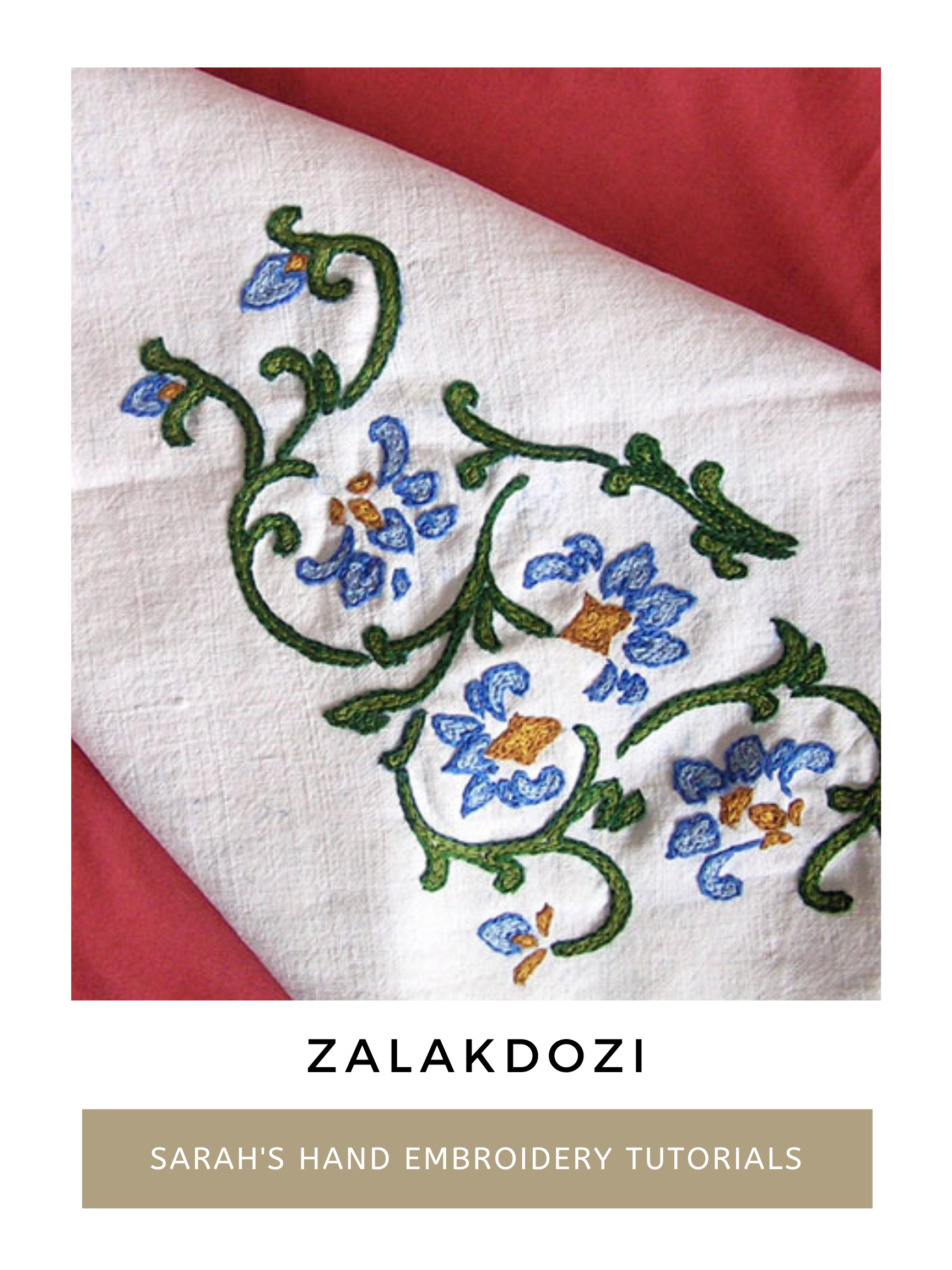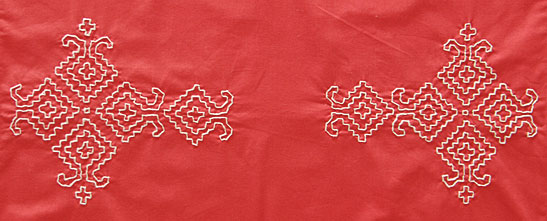 |
| Embroidery sample: Kasuti |
Kasuti is also known as
Dharwari Kashidakari
About and History
Kasuti carries an age-old history. Knowing this history and its contemporary state will help us to value this embroidery much more than ever. Using the logic of basic Holbein stitch, cross-stitch, and darning stitch, Kasuti creates designs that look ethnic and intricate.
The word ‘Kasuti’ is believed to be a worn-out variation of the word ‘Kasheeda’, which means ’embroidery’ in the Persian language. This is a form of hand embroidery done by the women of the villages that borders Maharastra and Karnataka, in India. This embroidery is done particularly in the village called ‘Dharwar’, and hence the alternate name: Dharwari Kashidakari (meaning, embroidery from Dharawar). The specialty of this embroidery is that it is still believed to be exclusively done by women!
This ancient form of embroidery began way back in the 6th- 8th century, during the reign of the Chalukyas. Considering that Kasuti is a derivative of a Persian word, it could be deduced that the Chalukyas had trade with the then Persian empire. It is a counted form of stitching that can easily be done over even weave fabric.
Kasuti uses four different types of stitches – Muragi, Ganti, Menthe, and Neygi. These stitches have been discussed in detail with illustrations in Kasuti lesson 1. While Muragi and Ganti styles of stitches follow the Holbein Stitch logic, Menthe follows the cross stitch pattern. Neygi follows the Running Stitch or the darning style pattern.
Kasuti today
With a lack of facilities, proper funding, and interest, this form of embroidery had seen a dwindling and maybe near extinction state. Over the past few years, art and culture enthusiasts have tried to attempt to revive this art back to life. Few women from the villages of Karnataka, India, were trained and set to work on and find markets to sell products based on Kasuti. The scenario is believed to look better now.
Patterns
Traditional patterns involved motifs of animals like elephants, cows, parrots, bulls, and peacocks. In fact, the elephant pattern is one of the most important ones of traditional Kasuti designs. Flower patterns were also used occasionally along with the animals and birds. Other most used and favorite traditional patterns were that of chariots, gopurams (Indian ornamental tower before a temple), cradles, and Tulasi plants (an aromatic herbal plant called Basil, used extensively in Indian medicines, and worship).
Kasuti patterns are geometrical in concept and so, also replicate ‘rangoli’ designs. Rangoli is a popular form of floor art in India, where finely ground white powder (and sometimes colorful) is used to represent designs. These designs follow symmetrical shapes or forms. So, to make it short, Kasuti is also used to make symmetrical and geometrical shapes to fill or border the clothing
Reference: KASUTI skill training presentation by Avni Varia to Sampark.
Next, go to the detailed Kasuti lessons:
Learn other traditional embroideries from around the world. Let’s make something beautiful today❤️




